Precision in the Cold: Transforming Picking Operations in Cold Chain Logistics
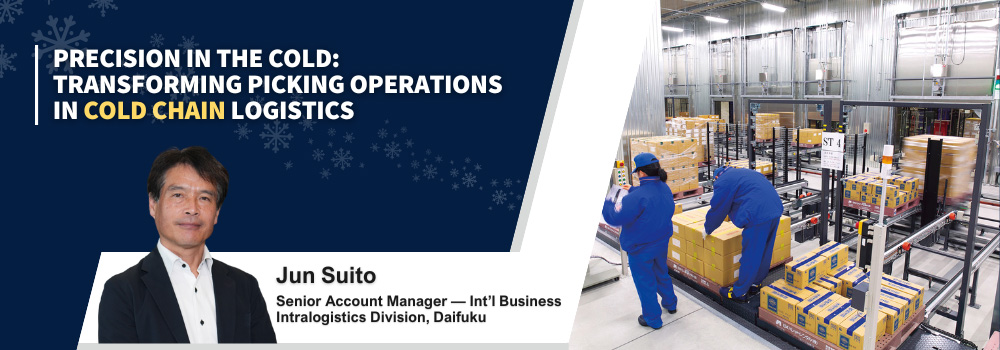
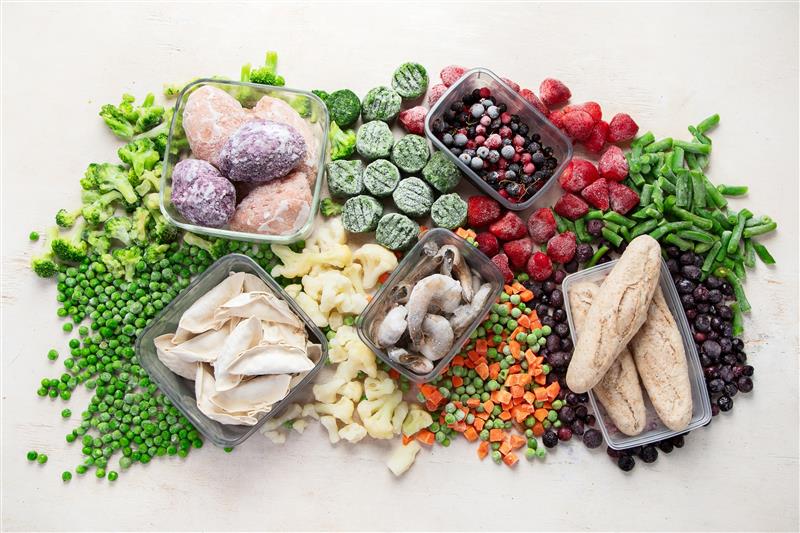
In the world of cold chain logistics, maintaining product integrity is not just a goal—it’s an absolute necessity. Whether you’re handling frozen foods, pharmaceuticals, or fresh produce, the challenges of ensuring fast, accurate order fulfillment in temperature-controlled environments are significant.
The growth of the cold chain is well documented, along with its challenges, particularly labor shortages (*1). As SKU counts rise and order sizes shrink due to the expansion of online grocery platforms and subscription-based food services, traditional manual picking methods are falling short. Precision is essential in both frozen and fresh environments to maintain product quality and meet customer expectations. And those expectations are high: whether an item needs to be kept at -30°C, -5°C, or slightly chilled at up to +5°C, customers still expect fast, reliable delivery—just as they would with non-temperature-sensitive goods.
The Cold Chain – Frozen vs. Fresh

It won’t come as a surprise to say that cold storage environments are among the most demanding in logistics. The need for temperature control, traceability management, and accuracy under extreme conditions make cold chain logistics one of the toughest areas of supply chain management.
- Frozen Product Handling
- Handling frozen goods—like ice cream, fish, and meat—requires maintaining temperatures as low as -30°C. But the challenge goes beyond temperature control. These environments are physically demanding, leading to labor shortages and increased risk of human error during manual picking.
- Fresh Product Handling
- In contrast, fresh produce, dairy, and pharmaceuticals typically require temperatures ranging from 0°C to 5°C. While not as extreme as freezing, these temperature-sensitive products still need quick handling to prevent spoilage. The demand for faster fulfillment of smaller orders in fresh storage areas is growing, but the same issues persist: labor shortages and the need for accuracy.
According to the US Occupational Safety and Health Administration (OSHA) (*2), employers are advised to provide frequent warm-up breaks and protective gear (OSHA Cold Stress Guidelines) in cold storage facilities. Frequent breaks, while vital to ensure health and safety, mean that your productivity will be lower when compared to ambient temperature facilities.
This raises a critical question: how can facilities protect workers while boosting productivity in the cold?
How Automation is the Answer for Both Fresh and Frozen Products
When it comes to picking operations, there are automated systems that support directly or indirectly. Let’s explore some key solutions:
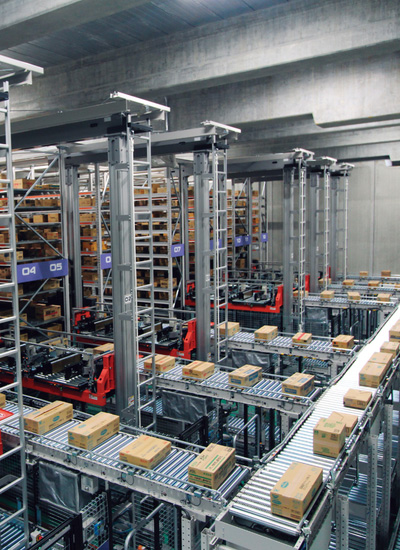
- Cold-Resistant AS/RS: the Backbone of your Picking Operations
-
Automated Storage and Retrieval Systems (AS/RS) are at the heart of modern cold storage facilities. While not a direct picking solution, an AS/RS system can facilitate high-density storage of pallets and cases and ensure that goods are retrieved in the correct order at the right time, essentially becoming the backbone of your picking operations. Cold-resistant AS/RS systems are designed to operate in temperatures as low as -30°C. By maximizing your vertical footprint and automating retrieval, AS/RSs significantly improve storage efficiency and operational throughput. Workers can only spend short periods of time in extreme cold temperatures. The AS/RS removes the need for manual or forklift-based retrieval. Instead, employees can focus on other tasks, like picking, in less strenuous temperature-controlled zones.
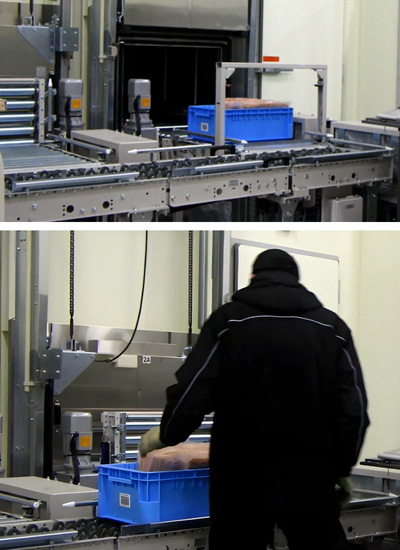
- Goods-to-Person Picking Stations: Working in Comfort
-
Dedicated picking stations, located in spaces ranging from sub-zero temperatures (still warmer than the storage areas) up to +5°C, typically provide a more comfortable setting for workers to carry out their tasks. These stations allow products to be brought directly to the worker, removing the need for physical movement and entry into ultra-cold storage areas. These can be via more advanced picking stations or simple conveyor-based GTP solutions, such as U-shaped conveyors. Naturally, the type of station used is best decided according to the room temperature and handled product. By placing picking operations in less strenuous temperature-controlled zones, workers can focus on the main task at hand—picking. This boosts both efficiency and ergonomics.

- Pick-to-Light Systems: Guiding the Way
-
Pick-to-light systems enhance picking with real-time guidance and inventory tracking. The same as dedicated picking stations, these can be located in less intense temperature-controlled zones, allowing operators to focus on task of picking. In the example image here, slow moving are stored in an automated storage system at -25°C and picked at +5°C, with a -5°C air-buffer room between storage and picking areas.
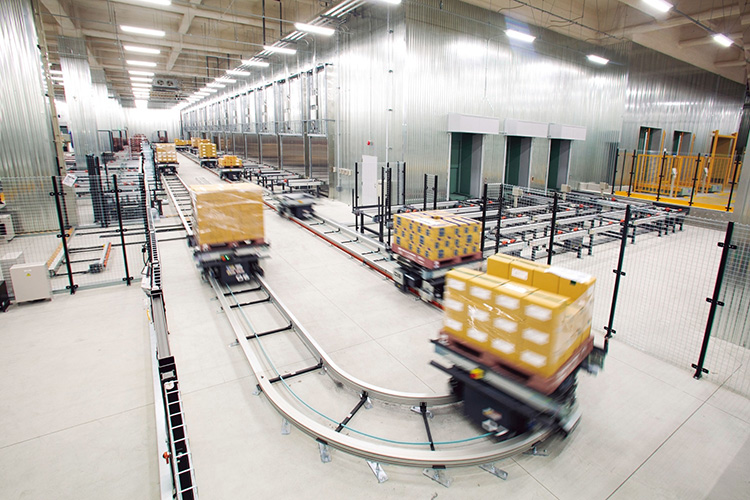
- Sorting Transfer Vehicles (STVs): Minimizing Human Intervention
-
Capable of operating down to -30°C, STVs are rail-guided, automated systems that transport and sort palletized goods between your cold storage area and case picking stations. These systems remove the need for human intervention in your colder storage area, allowing goods to be delivered quickly and directly to picking stations where operators can efficiently retrieve them in a more work friendly temperature.
Real-World Impact
As cold chain logistics evolve, the need for precision, speed, and worker safety becomes more urgent than ever. Automation offers a clear path forward: enhancing picking accuracy, reducing physical strain, and maintaining product integrity across frozen and fresh environments. Whether through proven AS/RS systems, ergonomic picking stations, or intelligent sorting vehicles, facilities have a range of options on hand. While the variables of each site can alter the ideal approach, automation has the means to transform your operations. Read some of our cold chain case studies to see the results of cold chian automation, including Vinamilk, Charoen Pokphand Foods, and Nikko Sangyo.
Impactful Automation Doesn’t Have to Be Massive
While large-scale automated systems often grab the headlines, the truth is that even small businesses can benefit from automation. From small-scale mobile racks and picking systems, to single-aisle AS/RS, automation solutions are available for smaller operations with more flexible budgets. Check out our Unit Load AS/RS Model Systems page to see system scales.
References:
Jun Suito

Senior Account Manager, International Business, Intralogistics Division, Daifuku
Jun Suito joined Daifuku in 2004 and currently serves as a Senior Account Manager in the Intralogistics Division. He began his career at Daifuku managing accounts across Asia, later transitioning to Europe and the United States. Over the past five years, he has played a key role in growing Daifuku’s presence in North America, serving as representative from Daifuku Japan.

